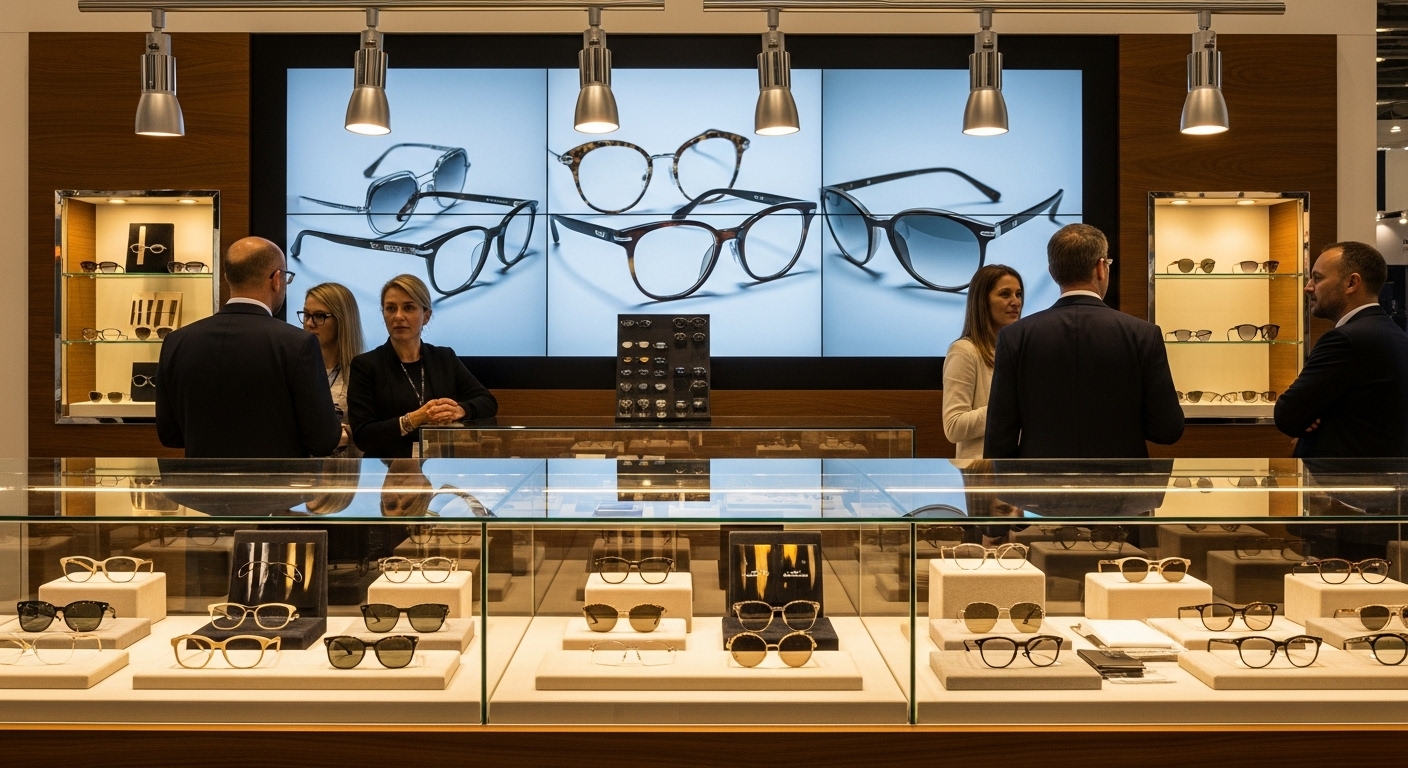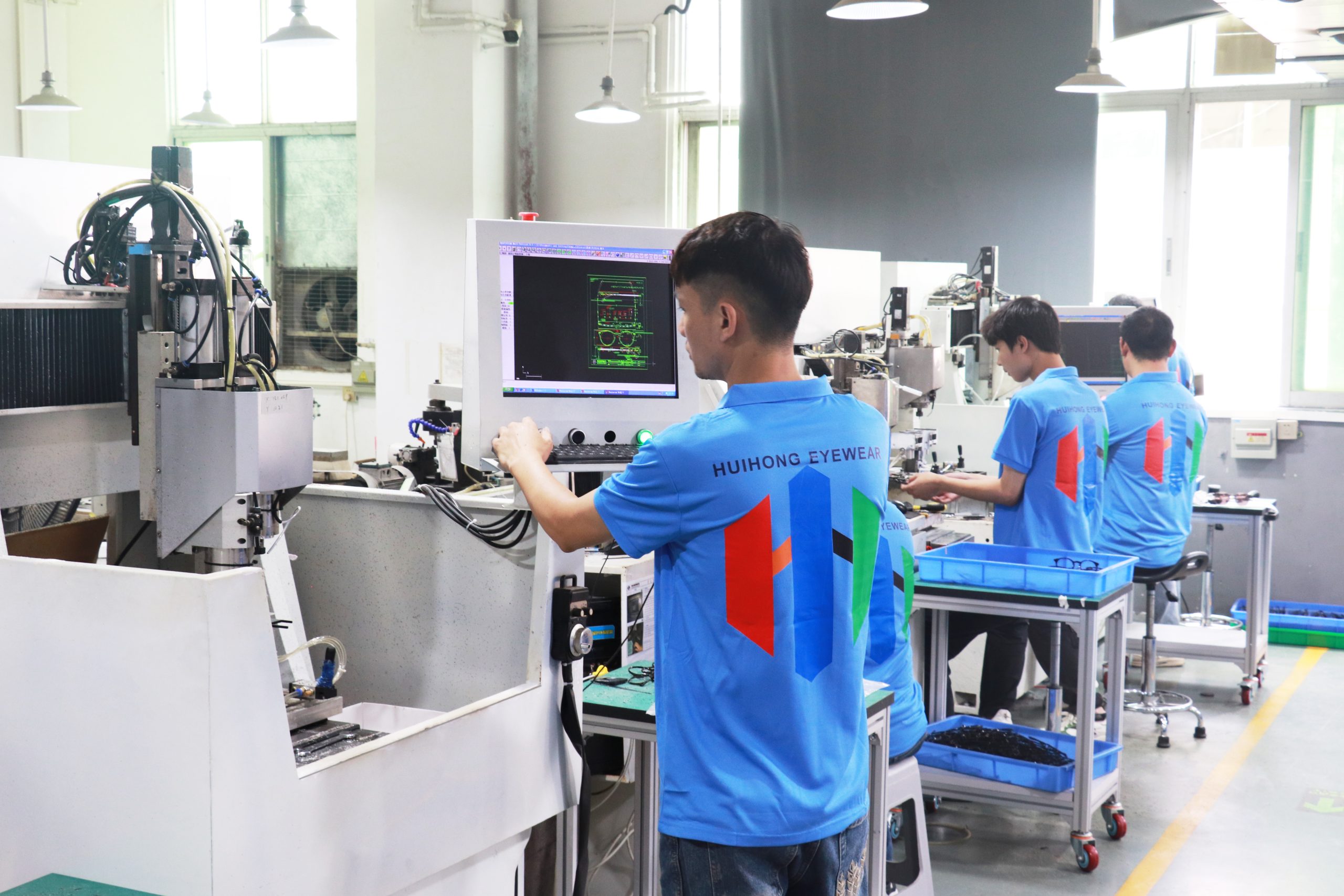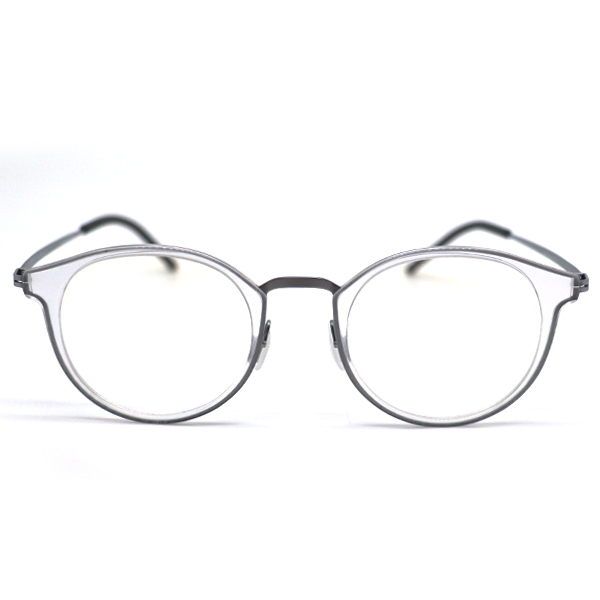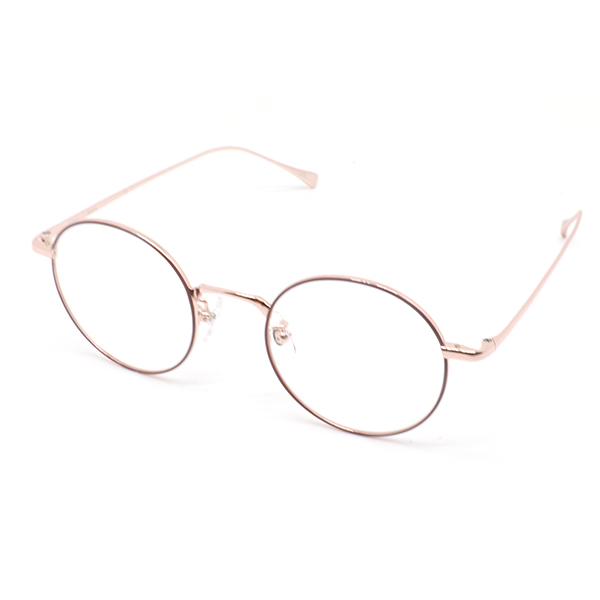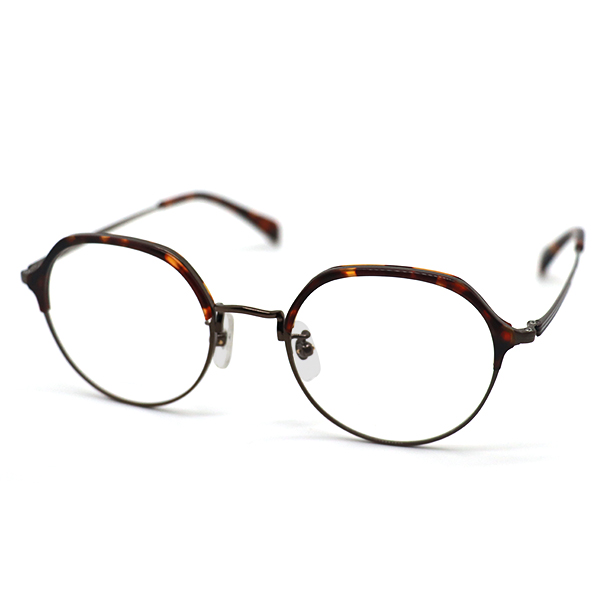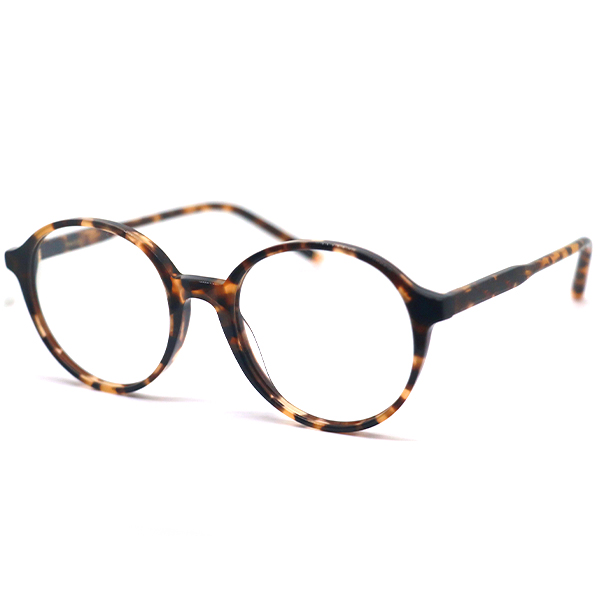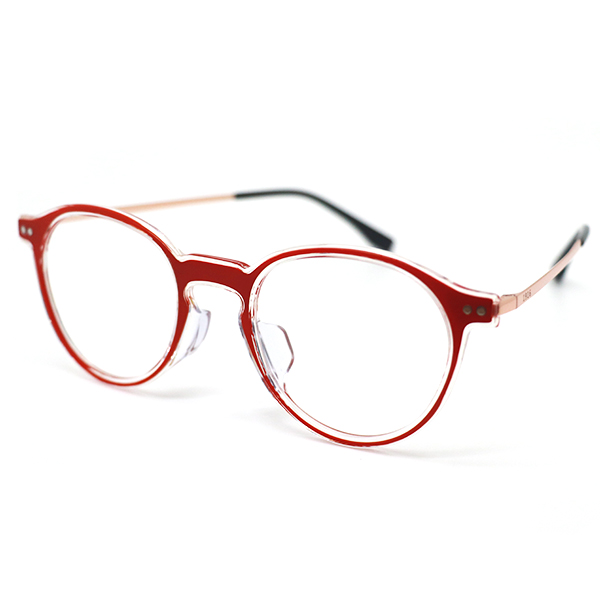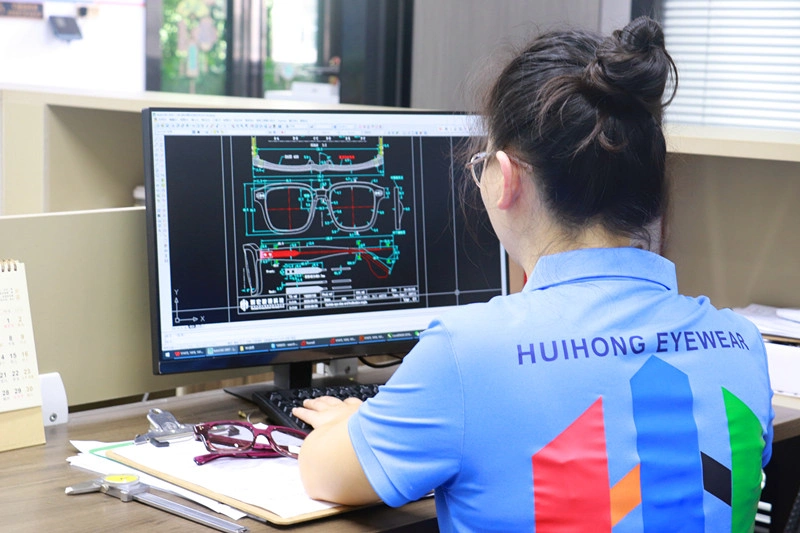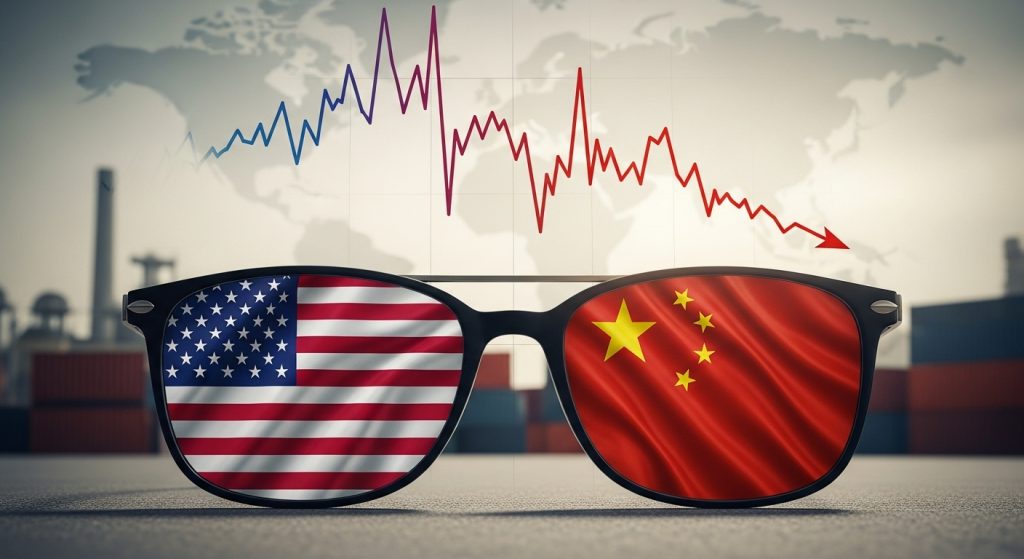
You now face an eyewear market transformed by global politics. How the U.S.–China Trade War Shapes the Future of the Eyewear Industry is no longer just a question for manufacturers; it directly affects your choices and wallet. Tariffs have raised costs on products like plastic frames and eyeglass cases, while brands shift production to places like Vietnam and Mexico. The market, valued at over $146 billion in 2024, keeps growing, especially in Asia-Pacific with an 8.1% CAGR. You see new trends—greater demand for health-focused, durable, and tech-advanced eyewear. For more insights, visit ,, and https://thevisioncouncil.org/blog/vision-council-p.
Key Takeaways
- The U.S.–China trade war has led many eyewear brands to shift production to countries like Vietnam and Italy to avoid high tariffs. This change may affect the prices and availability of eyewear products.
- Tariffs on eyewear can reach as high as 178%, causing brands to increase prices. Consumers should expect higher costs for both luxury and budget eyewear options.
- Look for brands that prioritize sustainability and transparency. Choosing eco-friendly options can add value and help you make informed purchasing decisions.
- Stay alert to changes in eyewear prices and availability. Comparing prices across different retailers can help you find the best deals in a fluctuating market.
- Innovations in eyewear design and technology are on the rise. Brands are investing in features that address digital eye strain and sustainability, providing you with more choices.
How the U.S.–China Trade War Shapes the Future of the Eyewear Industry
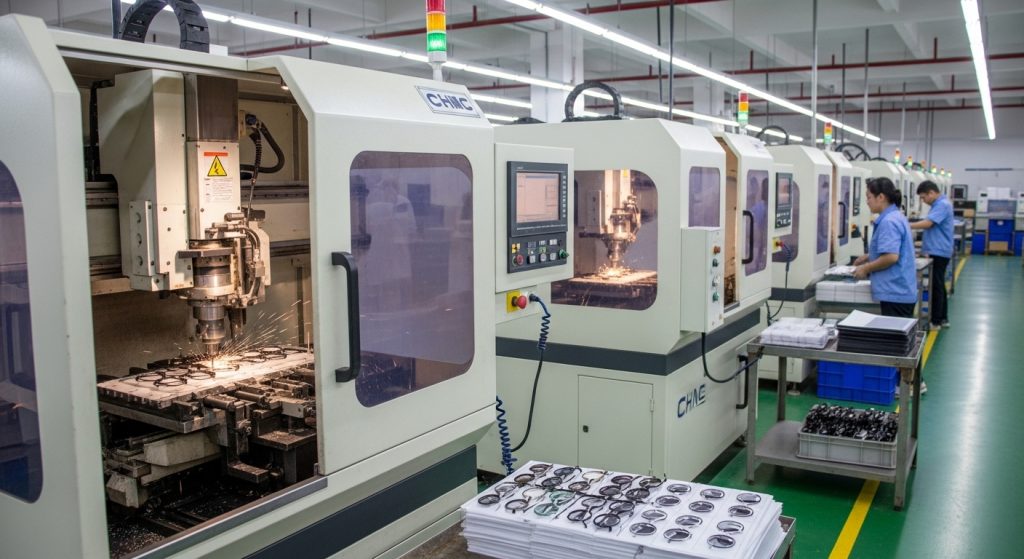
Global Supply Chain Shifts
You now see eyewear brands rethinking their entire supply chain strategy. How the U.S.–China Trade War Shapes the Future of the Eyewear Industry by forcing companies to look beyond China for manufacturing. Many brands have started moving production to countries like Vietnam, Italy, and Japan. These moves help brands avoid tariffs and diversify risk. However, each new location brings unique trade-offs.
Note: Government policies, especially tariffs, play a critical role in shaping the global eyewear industry. Section 301 tariffs on Chinese products have increased costs for optical goods, sometimes by as much as 25%. This situation pushes brands to reconsider pricing and sourcing, which can affect your access to affordable eyewear.
You might notice more frames labeled “Made in Italy” or “Made in Japan.” These labels often reflect a strategic shift to avoid tariffs and appeal to consumers who value heritage and prestige. However, the reality is more complex. Many of these frames still rely on Chinese expertise for components or finishing, highlighting how the U.S.–China trade war shapes the future of the eyewear industry through global collaboration.
Manufacturing Moves and Challenges
When brands move production out of China, they face significant operational and logistical hurdles. You should understand the main challenges:
- Production delays and inventory shortages often occur because companies depend on established Chinese suppliers.
- COVID-19 shutdowns and shipping disruptions exposed vulnerabilities in global supply chains.
- Tariff increases on Chinese imports force brands to rethink sourcing, but alternative locations bring new risks.
You also see operational challenges, such as:
- Maintaining factory efficiency and avoiding substandard orders.
- Managing schedules and preventing delays.
- Ensuring raw material quality and consistent product standards.
Let’s compare production costs and lead times across key manufacturing countries:
| Country | Per-Unit Cost Comparison | Lead Time (Days) | Cost Efficiency |
|---|---|---|---|
| Vietnam | 15-30% lower than China | 90-120 | Cost advantages |
| Italy | 3-5x higher than China | 90-120 | Prestige over speed |
| Japan | Higher than Vietnam | Longer than Vietnam | N/A |
Vietnam offers cost relief and helps brands avoid China-origin duties. Italy provides legacy and prestige, but not speed. Lead times in these countries often exceed 90-120 days, which can result in longer waits for new collections or restocks. You may experience delays or higher prices as brands adjust to these new realities.
China’s Evolving Role
Despite trade tensions, China remains a powerhouse in eyewear manufacturing. How the U.S.–China Trade War Shapes the Future of the Eyewear Industry by pushing Chinese factories to innovate and refine their processes. Today, Chinese manufacturers lead in precision engineering, material innovation, and responsible production.
Recent breakthroughs include:
| Innovation Type | Description |
|---|---|
| Lens Technology | Lithography-based lens technology that bypasses foreign restrictions on materials and processes. |
| Smart Glasses | Collaboration with electronics firms to produce super flat, thin, and precise prescription lenses for smart glasses. |
You benefit from these advancements through better quality, more durable frames, and access to the latest technology. Many “Made in Japan” or “Made in Europe” frames still rely on Chinese expertise for key steps in the production process. The global eyewear industry now values expertise, ethics, and innovation over simple geography.
How the U.S.–China Trade War Shapes the Future of the Eyewear Industry by encouraging brands to balance tradition, cost, and innovation. You see a market where quality depends on collaboration and adaptability, not just the country of origin.
Tariffs and Eyewear Pricing
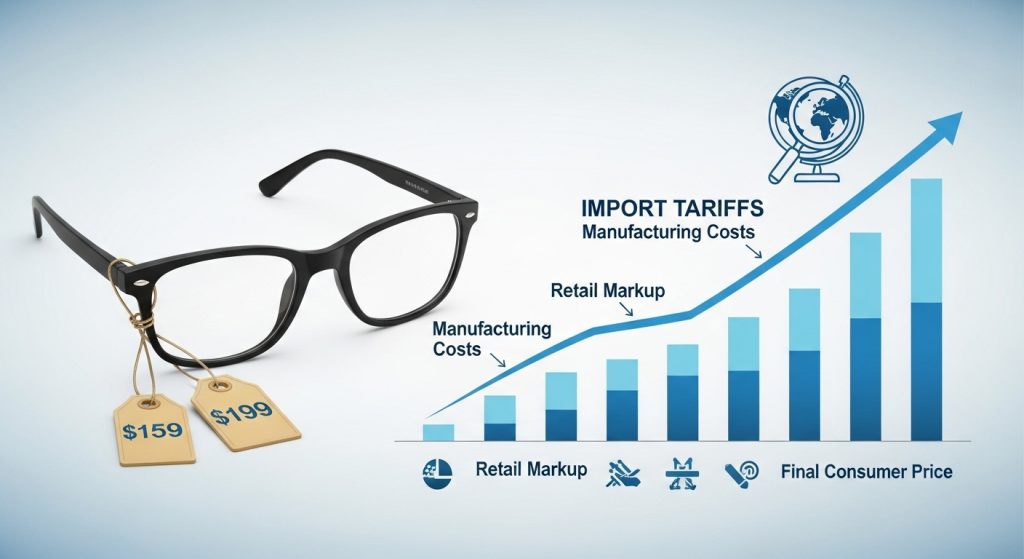
Cost Impact on Frames and Lenses
You now face eyewear prices shaped by some of the highest tariffs in the consumer goods sector. Since the start of the trade war, the U.S. has imposed steep tariffs on eyewear products imported from China. These rates have soared, making a direct impact on the cost of frames and lenses:
- Some eyewear products now face tariffs as high as 178%.
- Plastic eyeglass frames carry a 155% tariff.
- Contact lenses are subject to a 154.5% tariff.
- Sunglasses and eyeglass cases can also reach tariffs of 178%.
These increases have forced brands to rethink their sourcing and pricing strategies. Many companies now look for ways to absorb or offset these costs, but the reality is that higher tariffs often mean higher prices for you.
Price Changes for Consumers
You may have noticed that eyewear prices have climbed at both wholesale and retail levels. Tariffs on Chinese imports have doubled, causing a ripple effect throughout the industry. Last year, the eyewear sector paid $160 million in tariffs. This year, that figure is expected to reach $333 million. Brands often pass these added costs to you, resulting in a few dollars more per frame or lens, depending on the product.
Tip: Watch for price changes not only in luxury brands but also in budget-friendly options. Both segments feel the impact of increased tariffs.
Availability and Delays
How the U.S.–China Trade War Shapes the Future of the Eyewear Industry by affecting not just prices, but also product availability and delivery times. You might experience longer waits for new collections or restocks. Shipping delays and inventory shortages have become common as companies diversify suppliers and adjust to new trade realities.
- Tariffs have increased costs for both designer and affordable frames.
- Shipping disruptions and supply chain issues can lead to inventory shortages.
- Many optical labs rely on imported materials, making them vulnerable to price hikes.
- Companies now take proactive steps to maintain supply and avoid passing all costs onto you.
You benefit when brands find creative solutions, but you should stay alert to changes in pricing and availability as the market continues to adapt.
Quality, Innovation, and Brand Value
Material Sourcing and Standards
You see a shift in where eyewear brands source their materials. The U.S.–China trade war has pushed companies to rethink their supply chains and look for new partners. China remains a major supplier of frames and lenses, but brands now explore alternatives to manage risk and avoid tariffs. You notice more brands sourcing from Italy, Germany, Japan, and Switzerland. These countries offer high-quality materials and advanced manufacturing, but often at a higher cost. Tariffs, such as the 7.5% duty on optical products from China, influence these decisions. The Vision Council continues to advocate for tariff relief to help reduce costs for the industry.
- China supplies most frames and lenses.
- Brands consider Italy, Germany, Japan, and Switzerland for alternative sourcing.
- Tariffs on Chinese imports drive these changes.
- Industry groups push for tariff relief to ease economic pressure.
Design and Technology Trends
You benefit from rapid innovation in eyewear design and technology. Brands respond to global trade tensions by investing in new features and materials that set their products apart. Eyewear now serves as both a fashion statement and a functional tool. You find more options that address digital eye strain, sustainability, and personal style.
- Eyewear as a fashion accessory grows in popularity.
- Blue light filtering frames meet the needs of increased screen time.
- Lightweight, flexible materials like acetate, TR90, and titanium gain traction.
- Customization and virtual try-on tools improve your shopping experience.
- Sustainable and recycled materials appeal to eco-conscious buyers.
- Clip-on and magnetic accessories offer multi-use functionality.
- Smart frames with AR and audio features bring wearable tech to your daily life.
Global Collaboration
You witness brands leveraging technology and global partnerships to maintain quality and adapt to supply chain changes. Advanced manufacturing equipment, AI, and 3D printing help brands deliver consistent quality even as they diversify suppliers.
Eyewear brands use digital technologies and advanced equipment to enhance product quality and adapt to supply chain shifts. They form strong relationships within the supply chain ecosystem, improving efficiency and reducing costs.
Relying on multiple suppliers, rather than just one, helps brands optimize their supply chain and spread risk. This approach ensures you receive reliable products, even during times of political or economic instability.
You gain access to eyewear that reflects global expertise, innovation, and a commitment to quality—no matter where it is made.
What Consumers Should Know
Finding Value and Quality
You face a changing eyewear market shaped by shifting supply chains and rising tariffs. To find the best value and quality, you should focus on brands that prioritize sustainability and transparency. Many companies now highlight eco-friendly practices and use recycled materials. You can also look for brands that tell a compelling product story and offer innovative designs. Price and quality remain the main deciding factors, but sustainability adds extra value if it aligns with your needs.
- Choose brands with clear commitments to sustainability.
- Pay attention to material quality and craftsmanship.
- Use technology, such as virtual try-on tools, to compare fit and style.
- Research brands that offer both affordability and premium features.
You will notice that investing in higher-quality frames often saves money over time, as these products last longer and require fewer replacements.
Navigating Price Changes
Tariffs and supply chain shifts have caused eyewear prices to fluctuate. You may see price increases from both budget and luxury brands. Many companies pass on higher import costs to consumers, especially when tariffs affect major manufacturing hubs. To manage these changes, you should compare prices across different retailers and brands. Online platforms make it easy to track deals and spot trends.
Tip: Compare basic frames from Warby Parker (starting at $100) with Zenni Optical (as low as $6.99) or premium options from CustomEyes (up to $900). Investing in quality can offer better durability and long-term savings.
| Brand Name | Country of Origin | Design Style | Price Segment | Materials Used |
|---|---|---|---|---|
| Warby Parker | USA | Modern | Mid-range | Plastic |
| Zenni Optical | China | Trendy | Budget | Plastic |
| CustomEyes | Italy | Classic | Luxury | Metal/Acetate |
Future Trends to Watch
You will see brands and consumers continue to adapt as trade tensions evolve. Companies review supply chains and explore new sourcing strategies to reduce risk. Eyewear providers expect further price increases and inflation in the coming years. The U.S. still imports most sunglasses and frames from China, but other countries like Italy, Japan, and Mexico are gaining ground.

You should watch for more sustainable options, new materials, and digital shopping tools. Brands that adapt quickly to market changes will offer you the best mix of quality, value, and innovation.
The U.S.–China trade war continues to reshape the eyewear industry. You see changes in supply chains, rising prices, and evolving quality standards. To make smart eyewear choices, focus on brands that use sustainable materials, limit plastic packaging, and share transparent sourcing information.
- Look for ethical practices and community engagement.
- Explore online shopping tools, virtual consultations, and loyalty programs.
Stay informed about fashion trends and technology. Adapting your buying strategy ensures you find the best value and quality in a changing market.
FAQ
How do tariffs affect the price of eyewear you buy?
Tariffs increase the cost of importing frames and lenses. Brands often pass these costs to you. You may notice higher prices at both online and retail stores.
Why do some frames say “Made in Italy” or “Made in Japan” if production happens in China?
Many brands use global supply chains. You see “Made in Italy” or “Made in Japan” labels because final assembly or finishing occurs there, even if key parts come from China.
What can you do to find quality eyewear at a good price?
You should compare brands, check for transparent sourcing, and use virtual try-on tools. Look for companies that value sustainability and craftsmanship. Reading reviews helps you make informed choices.
Will eyewear shortages or delays continue?
You may still experience delays as brands adjust supply chains. Shipping disruptions and new sourcing strategies can slow restocks. Brands work to improve reliability, but some wait times remain possible.
How are brands responding to political instability in the eyewear market?
Brands diversify suppliers and invest in new technology. They form partnerships in multiple countries to reduce risk. You benefit from more choices and continued innovation, even during uncertain times.


